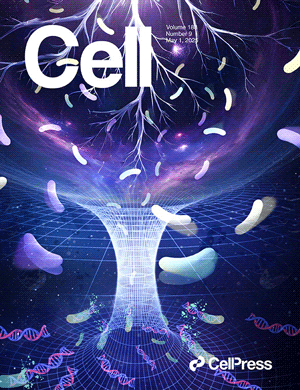
Volume 188, Issue 9p2521-2539.e22May 01, 2025
Rui Dai1,2,3,4,11 ∙ Jingying Zhang2,3,11 ∙ Fang Liu1,11 ∙ Haoran Xu1,3,4 ∙ Jing-Mei Qian1,3,4 ∙ Shani Cheskis5 ∙ Weidong Liu1,3,4 ∙ Binglei Wang2 ∙ Honghui Zhu6 ∙ Lotte J.U. Pronk7 ∙ Marnix H. Medema7 ∙ Ronnie de Jonge8,9 ∙ Corné M.J. Pieterse8 ∙ Asaf Levy5 ∙ Klaus Schlaeppi10 ∙ Yang Bai2,3,12
The cover of this issue of Cell features the research article by Dr. Yang Bai of Peking University, titled "Crop Root Bacterial and Viral Genomes Reveal Unexplored Species and Microbiome Patterns”.

Research background
Rhizosphere microbial reference genomes are essential for metagenomic analysis and mechanism studies of crop rhizosphere microbiomes. Currently, publicly available crop rhizosphere bacterial genomes are limited in quantity and phylogenetic diversity, and research on bacterial-viral interactions in crop rhizosphere ecosystems is relatively insufficient.
Research significance
Genomic resource expansion: By combining high-throughput bacterial culture with metagenomic sequencing, the wheat, rice, corn and alfalfa rhizosphere bacterial genome collection (CRBC) and viral genome collection (CRVC) were constructed. CRBC greatly expanded the number and phylogenetic diversity of publicly available crop rhizosphere bacterial genomes, increasing the diversity of crop rhizosphere bacteria by 290.6%; CRVC contains 9,736 non-redundant viral genomes, including 1,572 genus-level clusters that have not been reported in crop rhizosphere microbiomes before.
Functional and interaction discovery: From these genomes, conserved bacterial functions enriched in rhizosphere microbiomes of different soils and host plants were identified, and previously unexplored bacterial-viral interactions in crop rhizosphere ecosystems were revealed.
Research prospects
Microbial mechanism research: Use CRBC and CRVC to deeply explore the interaction mechanism of crop rhizosphere microorganisms, such as how bacteria-virus interactions affect the structure and function of rhizosphere microbial communities.
Agricultural application exploration: Based on these genomic resources, develop regulatory strategies for crop rhizosphere microorganisms to promote crop growth and health and improve the sustainability of agricultural production, such as using specific rhizosphere bacteria or viruses to enhance crop stress resistance or nutrient absorption capacity.
Cover Design Process
Our hours
Beijing time: 9:00-18:00